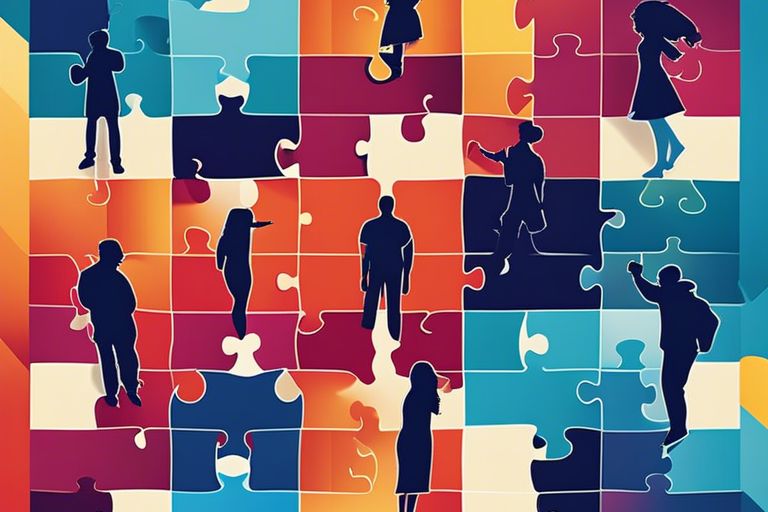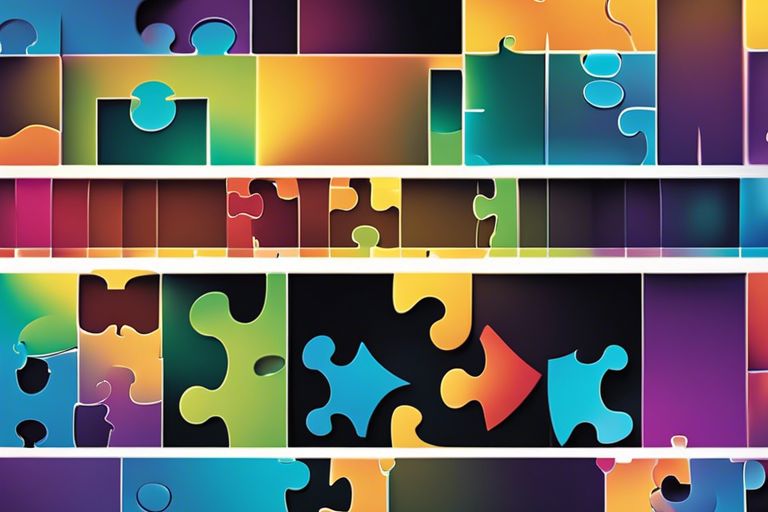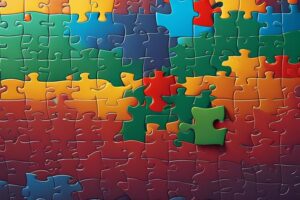In today’s blog post, we research into the intricate world of autism spectrum disorder, unravelling the complexities and nuances of this neurodevelopmental condition. Autism, a condition that affects communication, social interaction, and behaviour, is not a one-size-fits-all disorder. It is a spectrum, ranging from individuals with mild challenges to those with severe impairments. Understanding the spectrum is crucial as it encompasses a wide range of abilities and difficulties. Early diagnosis and intervention play a vital role in improving outcomes for individuals on the spectrum, yet many challenges persist. It is important to acknowledge that each person with autism is unique, with strengths and challenges that should be embraced and supported. Join us as we navigate through the intricacies of autism and shed light on this complex yet fascinating condition.
Key Takeaways:
- Autism is a spectrum: Autism is a complex neurodevelopmental condition that presents itself across a wide spectrum of symptoms and challenges.
- Individualised support is crucial: Each person with autism is unique, requiring tailored support and interventions to help them thrive and succeed.
- Early intervention is key: Identifying and addressing autism at an early age can significantly improve outcomes and quality of life for individuals on the spectrum.
The Autism Spectrum
Understanding the intricacies of the autism spectrum is crucial in gaining insight into the diverse range of characteristics and challenges experienced by individuals diagnosed with autism spectrum disorder (ASD). This spectrum encompasses a wide variety of neurodevelopmental conditions that are characterised by difficulties in social interaction, communication, and repetitive behaviours.
Historical Perspectives on Autism
Historically, autism was first identified and termed in the early 20th century by Swiss psychiatrist Eugen Bleuler, who used the word to describe withdrawal symptoms seen in schizophrenic patients. It was not until 1943 when child psychiatrist Leo Kanner introduced the term “early infantile autism” to describe a distinct group of children with a profound lack of interest in other people. These pioneering works laid the foundation for understanding autism as a separate condition.
Furthermore, in the 1970s, researchers such as Lorna Wing and Michael Rutter expanded the concept of autism to include a wider spectrum of characteristics beyond the classic presentation of Kanner’s autism. This shift towards a spectrum view highlighted the heterogeneity of the condition and paved the way for more nuanced and individualised approaches to diagnosis and intervention.
Current Concepts and Categorizations
Currently, autism is conceptualised as a spectrum disorder comprising different levels of severity and a diverse array of symptoms. The diagnostic criteria outlined in the Diagnostic and Statistical Manual of Mental Disorders (DSM-5) includes deficits in social communication and interaction, alongside restricted, repetitive patterns of behaviour, interests, or activities. The spectrum nature of autism recognises that individuals can present with varying degrees of impairment in these areas.
Moreover, the autism spectrum acknowledges the concept of neurodiversity, emphasising the strengths and unique abilities of individuals with autism. By recognising and celebrating neurodiversity, society can foster a more inclusive and understanding environment for individuals on the autism spectrum.
Recognizing Autism
Autism, also known as Autism Spectrum Disorder (ASD), is a complex neurodevelopmental condition that affects individuals in various ways. Recognising the signs and symptoms of autism is crucial in ensuring early intervention and support for individuals on the spectrum.
Early Signs and Symptoms in Children
Early signs of autism in children may include delayed speech or language skills, difficulties with social interaction, repetitive behaviours, and intense focus on specific interests. Some children with autism may also exhibit sensory sensitivities, such as being overly sensitive to certain textures, sounds, or lights. It is important for parents and caregivers to be vigilant for these signs and seek professional evaluation if they have concerns about their child’s development.
Children on the autism spectrum may struggle with understanding and expressing emotions, which can hinder their ability to form and maintain relationships. Additionally, they may have difficulty with non-verbal communication cues like facial expressions and gestures. Early identification of these signs can lead to effective interventions that support the child’s social and emotional development.
Diagnostic Criteria and Assessment Processes
Diagnosing autism involves comprehensive assessments that consider the individual’s behavioural patterns, communication skills, social interactions, and sensory sensitivities. The diagnostic criteria for autism are outlined in the Diagnostic and Statistical Manual of Mental Disorders (DSM-5), which is used by healthcare professionals to evaluate and diagnose neurodevelopmental conditions.
During the assessment process, healthcare professionals may conduct standardised tests, observations, and interviews to gather information about the individual’s symptoms and developmental history. It is essential for the assessment to be carried out by a multidisciplinary team, including psychologists, paediatricians, speech therapists, and occupational therapists, to ensure a holistic understanding of the individual’s needs.

Living with Autism
Living with Autism can present a unique set of challenges, but it is important to remember that everyone’s experience with autism is different. Individuals on the autism spectrum may face difficulties in communication, social interaction, and repetitive behaviours. However, with the right support and understanding, individuals with autism can lead fulfilling lives and make valuable contributions to society.
Challenges and Coping Strategies
Challenges faced by individuals with autism can vary from sensory sensitivities to difficulties in understanding social cues. Coping strategies such as following a routine, using visual aids, and seeking support from professionals can help individuals with autism navigate these challenges. It is essential to tailor coping strategies to suit the individual’s needs and preferences, as what works for one person may not work for another.
Support Systems and Therapeutic Interventions
Support systems play a crucial role in enabling individuals with autism to thrive. Therapeutic interventions such as behavioural therapy, speech therapy, and occupational therapy can help individuals with autism develop essential skills and improve their quality of life. Early intervention is key in providing the necessary support to maximise the potential of individuals with autism.
Societal and Cultural Impacts
Perception of Autism in Society
Autism in society has often been misunderstood and stigmatised, leading to misconceptions and negative stereotypes. People with autism are frequently viewed through a narrow lens, focusing only on their challenges and deficits rather than their unique abilities and strengths. This limited perspective has resulted in exclusion, discrimination, and barriers to opportunities for individuals on the autism spectrum.
It is crucial to shift societal perceptions of autism towards a more inclusive and accepting outlook. By recognising and celebrating the diverse talents and perspectives of individuals with autism, we can create a more understanding and supportive environment for everyone to thrive. Increasing awareness and promoting acceptance is key to breaking down the barriers that limit the potential of those with autism.
Advancements in Inclusivity and Awareness
In recent years, there have been significant advancements in promoting inclusivity and raising awareness about autism. More initiatives and campaigns have emerged to educate the public about autism spectrum disorders, aiming to dispel myths and combat stigma. Schools, workplaces, and communities are gradually becoming more inclusive, providing support and accommodation for individuals with autism.
Organisations and advocacy groups play a crucial role in advocating for the rights and inclusion of individuals with autism. Through their efforts, policies and practices are being implemented to ensure equal opportunities and accessibility for all. Progress in inclusivity and awareness not only benefits individuals with autism but also enriches our society as a whole by embracing diversity and fostering empathy.
The growing recognition of the unique strengths and contributions of individuals with autism is paving the way for a more inclusive and supportive society.

Research and Future Directions
As research on Autism Spectrum Disorder continues to advance, the National Institute of Mental Health is at the forefront of understanding the complexities of this neurodevelopmental condition. Emerging studies in neurodiversity are shedding light on the diverse ways in which individuals on the autism spectrum perceive and interact with the world around them.
Emerging Studies in Neurodiversity
Recent research has shown that individuals with autism possess unique cognitive strengths and differences that contribute to their neurodiversity. Understanding these differences can help inform more individualised support and interventions tailored to the specific needs of each person. By recognising and embracing neurodiversity, society can move towards a more inclusive and accepting approach to autism.
Potential Developments in Treatment and Care
Looking towards the future, there are exciting potential developments in the treatment and care of individuals with autism. Researchers are exploring innovative interventions that focus on enhancing social communication skills, improving sensory integration, and supporting emotional regulation. These advancements have the potential to significantly improve the quality of life for individuals on the autism spectrum.
Furthermore, the personalised nature of these treatments and the focus on long-term outcomes mark a shift towards a more holistic and compassionate approach to caring for individuals with autism. By prioritising individual needs and strengths, the future of autism care looks promising in fostering empowerment and independence for individuals on the spectrum.

Unveiling the Meaning of Autism – Understanding the Spectrum of Neurodevelopmental Conditions
Autism, a complex neurodevelopmental condition, encompasses a spectrum of challenges that affect individuals differently. From social communication difficulties to repetitive behaviours, understanding the diverse manifestations of autism is crucial for providing tailored support and interventions. By deciphering the spectrum of neurodevelopmental conditions, we can enhance awareness, acceptance, and promote a more inclusive society for individuals with autism. It is imperative to acknowledge the unique strengths and challenges of each individual on the spectrum, fostering a supportive environment that celebrates neurodiversity. Through continued research, education, and advocacy, we can work towards a better understanding and acceptance of autism, paving the way for a more inclusive and accommodating world for all.
FAQ
Q: What is autism?
A: Autism is a neurodevelopmental condition that affects how a person communicates and experiences the world around them.
Q: What are the common signs of autism?
A: Common signs of autism include challenges in social interaction, communication difficulties, repetitive behaviours, and sensory sensitivities.
Q: How is autism diagnosed?
A: Autism is typically diagnosed through behavioural observations, developmental screenings, and comprehensive evaluations conducted by healthcare professionals.
Q: Is there a cure for autism?
A: There is currently no cure for autism, but early intervention services and therapy can help individuals improve their skills and quality of life.
Q: What is the autism spectrum?
A: The autism spectrum refers to a range of neurodevelopmental conditions that vary in severity and symptoms, including autism disorder, Asperger syndrome, and pervasive developmental disorder not otherwise specified (PDD-NOS).
Q: How common is autism?
A: Autism affects approximately 1 in 54 children in the UK, according to the National Autistic Society.
Q: How can I support someone with autism?
A: You can support someone with autism by practicing patience, understanding their unique communication needs, promoting their independence, and creating a safe and structured environment for them to thrive in.







